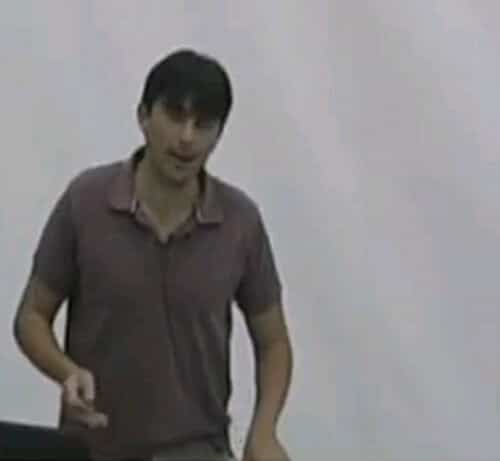Prof. Yoram Dagan from the School of Physics and Astronomy bombards a crystal with a laser and heats another crystal to 800 degrees - in order to create a nanometer layer of material a single atom thick, which may replace silicon in the future "The electronics of the future will use the spin properties of the electron to store a double amount of information within a single electronic base unit," he estimates

"In recent decades, the microelectronics industry has been progressing according to the principles defined by Gordon Moore, one of the founders of Intel, in the law that bears his name: every two years the number of components located on a given area doubles," says Prof. Dagan. "However, this miniaturization process cannot be endless. That is why we are currently trying to develop a replacement for the silicon-based semiconductors that we are familiar with. In my laboratory we are developing oxide-based nanoscale crystals for this purpose: structures that alternately combine layers of an isolated crystal with layers of another crystal. It is important to note that sometimes, even when the two crystals are isolated, a nanometer surface with special properties is formed between them, capable of conducting an electric current."
The integrated crystalline structure is produced in a complex process: the two types of crystals are placed side by side, with one material heated to a temperature of approximately 800 degrees Celsius, while the other remains at room temperature. Ultraviolet laser signals, sent to the unheated crystal, release atoms from it. The freed atoms stick to the heated material, and adopt the crystalline structure of the crystal receiving them. In this way, a surface with a thickness of a single atom is obtained, which is actually a third material, combining properties of the two original materials: atoms originating from one material, arranged in a pattern that characterizes the other material.
"If, for example, we aim to create a layer of atoms that combines properties of high polarization and magnetism, we choose to match a crystal of a magnetic material with a crystal characterized as a ferroelectric material - a material that has a strong electric polarization, which it 'remembers' even if the electric field is removed the external.” Prof. Dagan explains. "In my lab we focus on a pair of isolated crystals, which suits our purposes: lanthanum-aluminum oxide and strontium titanium oxide. We chose this pairing because the surface separating the two isolated crystals is surprisingly both superconducting and magnetic, two phenomena that normally oppose each other."
The nanoscale structures based on a single layer of atoms allow researchers to observe physical phenomena and effects that exist only at the tiny size. In this way, they can see wave phenomena that affect the conduction of electrons, and notice quantum phenomena known in theoretical physics - when they are translated into the actual behavior of the material (at very low temperatures). Among other things, Prof. Dagan's research focuses on magnetic phenomena that occur in the integrated material, and in particular on what is known as the spin-rail interaction: control of the direction of rotation of the electron, called 'spin', which may change the face of electronics in the years to come. "The electronics of the future will use the spin properties of the electron to store a double amount of information within a single basic electronic unit," Prof. Dagan estimates.
Prof. Yoram Dagan is a physicist working in the field of the solid state. He did all of his studies at Tel Aviv University, and in 2005, after a four-year post-doctorate at the University of Maryland in the USA, he joined the university's faculty. Prof. Dagan has won many research grants and various awards of excellence, including the Rector's Award for Excellence in Teaching. His research group deals with strongly correlated electronic systems such as superconductors, magnetic materials and surfaces separating oxides.

2 תגובות
He is also an excellent lecturer. His lectures in classical physics 1 + 2 are really fun!
An interesting discovery... it's just a shame that there is no photographic proof 🙁